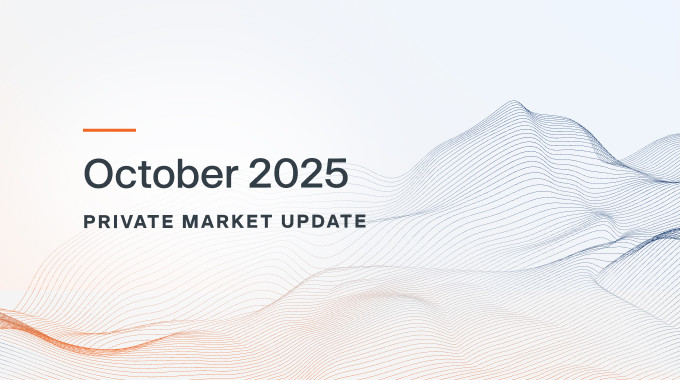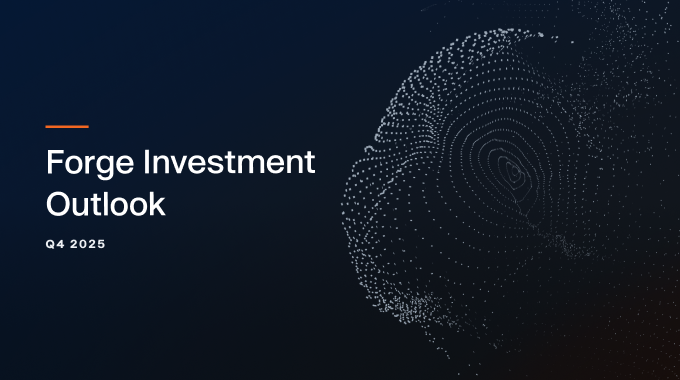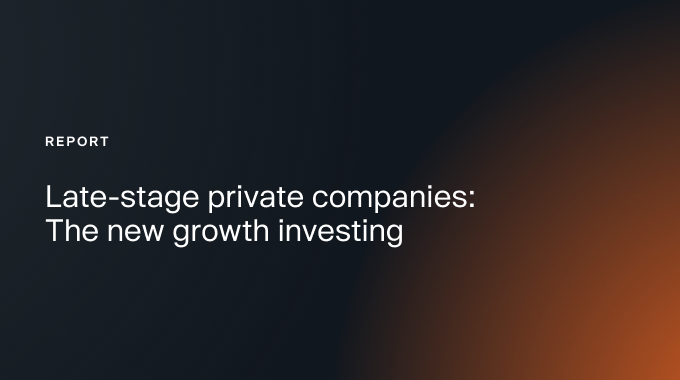Private Market Update January 2025
A Tale of Two Cities: AI Companies Reign Supreme, Non-AI Companies Languish
It was the best of times, it was the … okay-est of times. As AI ushers in a new age of increased operational efficiencies and revenue opportunities, private AI-related companies seem to be thriving. Meanwhile, non-AI companies, while perhaps not in the season of darkness, appear to be trying to find their way toward the light.
In the second half of 2024, a basket of private market AI companies tracked by Forge gained 51%, with a poignant December surge. Over this period, this basket—which includes Anthropic, CoreWeave, Databricks, OpenAI, Perplexity, Scale AI, and xAI—outperformed the Public Market Magnificent 7 by over 4x.1
Yet, the 12% H2 2024 return of the Public Mag 7 is nothing to dismiss, nor is the 41% return by the Private Market Mag 7.2 Still, both of these groupings include some AI names and companies with strong AI sensibilities, and they have outperformed non-AI companies over the past year.
In the Public Mag 7, for example, AI chipmaker Nvidia led the way with a 171.2% gain for the whole of 2024, while the next highest return was Meta at 65.4%.3 In the Private Mag 7, three AI names— Databricks, Scale AI, and OpenAI—accounted for over half the grouping’s H2 returns.4
These AI-driven gains also helped propel the private market last month, while public market performance mostly closed the year on a down or muted note.
But the divide extends past stock returns. There's also a tale of two funding environments.
In one realm, AI and AI-related companies have been able to raise huge rounds of capital while staying private. Anthropic is reportedly closing in on a $2 billion round that would approximately triple its valuation to $60 billion.5 Databricks, after announcing a $10 billion Series J in December at a $62 billion valuation,6 raised over $5 billion more in a debt raise this month, which will help fund taxes from employee stock sales.7
In some sense, the private market for AI companies is like the London that Charles Dickens portrayed in The Tale of Two Cities—imperfect, but more orderly and promising than the chaos of Paris. Meanwhile, in the Paris of this comparison, few non-AI companies have tested the IPO waters in the past year. These few names include ServiceTitan, which IPO-ed in December and saw its valuation jump 42% on its first day of trading.8
Other leaders like Chime, Klarna, and Netskope are on IPO watch and, if those public exits come to fruition, that could defrost an IPO market that's been icy. CoreWeave, the AI hyperscaler, is also gearing up for an IPO, and that could spur others like Dataminr to go public. But for the most part, AI companies seem to be enjoying the strong demand for this technology in the private sphere, which seems to be in the early days of driving changes in the workplace and a broader societal shift.
The above suggests that 2025 is already shaping up to be a year where AI continues to thrive, while the rest of the private market looks to be a mixed bag. Some companies will break into the public market to capture funding and opportunities they can't find elsewhere. Whereas, others may still struggle to find capital, as they look to maintain valuations from their last primary funding rounds.
The IPO Pipeline Shows Signs of Revitalization in 2025
The 2025 IPO pipeline shows signs of revitalization with several large and established unicorns making meaningful moves toward public exits in 2025. A more attractive macroeconomic backdrop coupled with greater political certainty has led some pundits to forecast a good year for IPOs.9 With clearer valuation benchmarks and a recovering appetite for risk, private companies may view an IPO as a more attractive path to access capital, enhance liquidity, and expand their reach.
Notably, Klarna, the Swedish fintech giant specializing in buy-now-pay-later services, is speaking with major investment banks to lead its anticipated 2025 IPO.10 Similarly, Chime, a prominent digital bank, and Nvidia rival, Cerebras, have filed for an IPO11,12, while Nvidia-backed CoreWeave, an AI cloud platform, is targeting a public debut in the second quarter of 2025.13Collectively, these recent developments further support a resurgence in IPO activity, with companies across various sectors positioning themselves to capitalize on favorable market conditions in the coming months.
Bid/Ask Spreads Tighten
As the private market gained in December, bid/ask spreads tightened, indicating stronger liquidity. In recent months, the median spread has remained below its long-term average, though it's not quite as low as some of the high-volume months in 2020 and 2021.
Buy-Side Indications of Interest Keep Surging
Evidence of the strong demand for private companies trading on Forge, which include AI companies, can be seen with the recent surge in buy-side indications of interest (IOIs), which continued to climb in December following a big jump in November. The December mark even surpassed the highs of late-2020/early-2021.
Trade Premiums Tick Down
Despite the significant buy-side demand, average trade premiums ticked down at all levels. It's hard to draw too many conclusions from what may be considered to be noisy data month-to-month but, one potential explanation could be that, while a select few, such as Databricks, continue to trade up, other companies—especially the non-AI variety—are finding that they still need to reset valuations after the jubilance of 2020-2021.
Unique Issuers Stays High
Lastly, the number of unique issuers with sell IOIs remained relatively high in December, although slightly below November 2024. Sometimes, an outsized percentage of sell IOIs indicate a weak market, with existing investors trying to exit. However, when paired with the data on the buy side, this potentially indicates that lots of sellers are trying to take advantage of the elevated demand.



